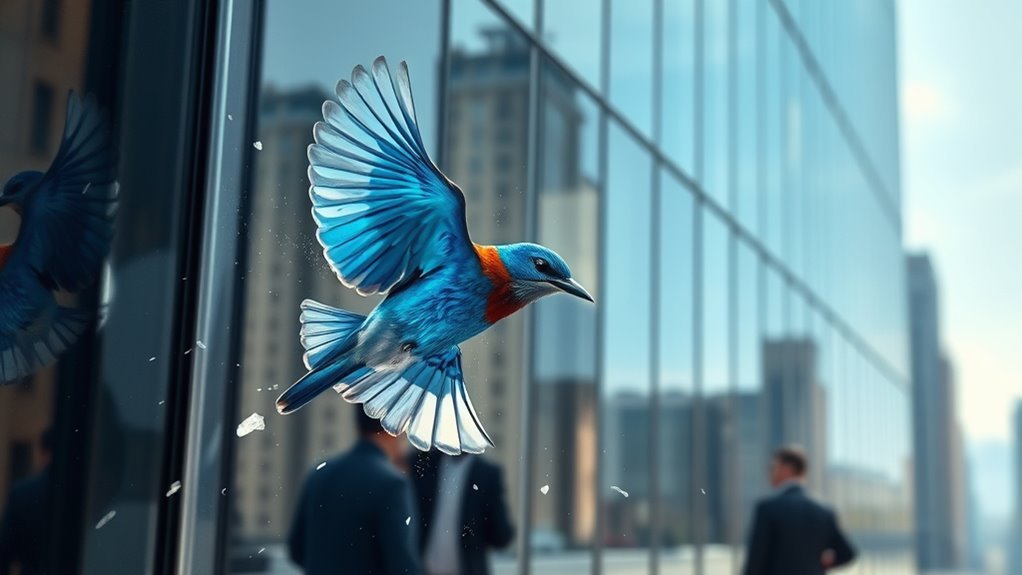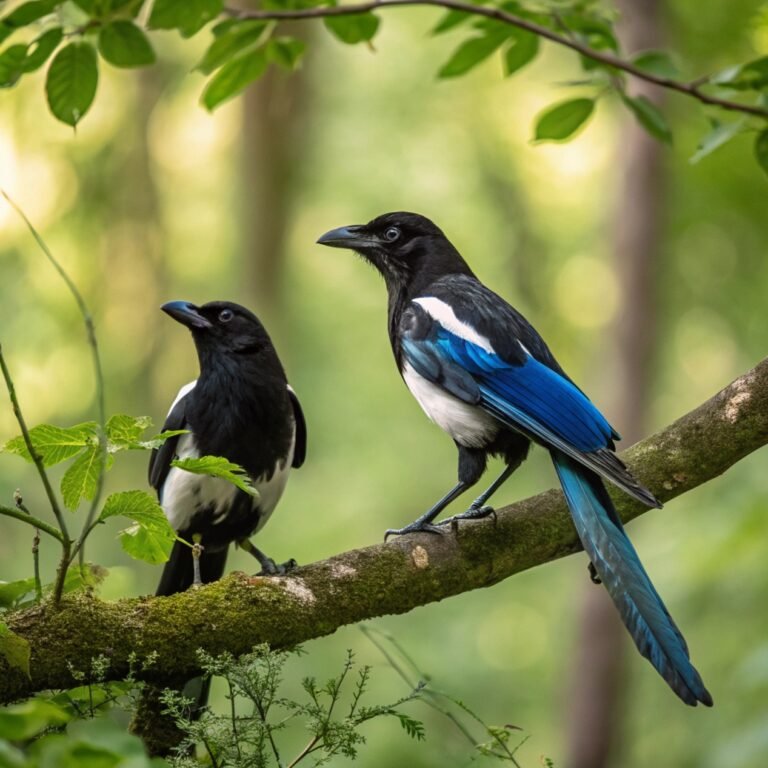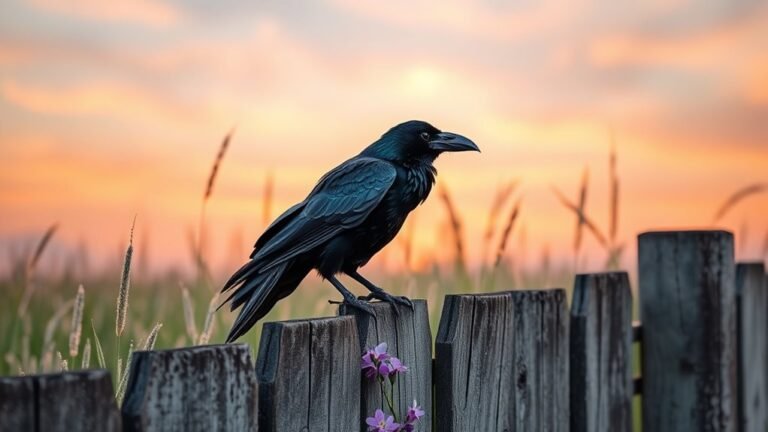Bird Hitting a Window: Interpretations and Insights
Birds in urban areas face challenges due to windows. These transparent structures can confuse birds because of reflections and light. This raises important questions about how city designs impact bird safety. Factors like building materials, lighting, and window placement contribute to bird collisions. To reduce these incidents, we can explore solutions such as using bird-friendly glass or modifying building designs. Understanding these aspects can help us live better with nature.
Key Takeaways
- Birds often collide with windows due to reflections of nature that mislead them into thinking it's open space.
- Urban environments contribute to increased collision risks by fragmenting habitats and altering migration patterns.
- Artificial light at night confuses birds, impacting their navigation and increasing the likelihood of collisions.
- Understanding the factors behind window collisions can foster community actions to create safer environments for birds.
- Protecting birds from window collisions enhances biodiversity and supports essential ecological functions they provide.
The Anatomy of a Bird's Flight

Birds use their wings to fly in a way that goes beyond simple flapping. Their wing structure is key to how they move through the air. The position of their feathers helps them achieve good aerodynamics.
During takeoff, birds change their wing shape and angle to gain power. As they glide, they follow specific paths, using warm air currents to stay aloft.
When it's time to land, they carefully control their feathers and body posture to touch down smoothly.
Understanding these actions reveals how birds adapt to flying. Their ability to maneuver in the sky shows their skill in using the natural elements around them.
Understanding Avian Navigation
Birds have strong physical features for flying and impressive skills for navigating long distances. Their instincts help them tackle the challenges of migration.
Birds use various senses, like sight and the Earth's magnetic field, to guide their paths. The sun and stars also help them find their way.
Learning how these features work shows the connection between birds' biology and behaviors. This understanding can deepen your respect for birds and their fascinating abilities.
The Impact of Urban Environments

Urban environments create challenges for birds. Their natural ability to navigate often clashes with buildings and structures made by humans. In cities, migration patterns change because of habitat fragmentation.
Birds find it hard to identify safe routes among tall buildings, disrupting their traditional paths. The decline of green spaces isolates bird populations, reducing genetic diversity and their capacity to adapt. Moreover, artificial light interferes with their sleep cycles, complicating their travels.
Think about your community's role in reducing these impacts. You can support urban designs that create spaces friendly to wildlife. By raising awareness and taking action, you can help make a better environment for both people and birds.
Common Window Collision Factors
Birds often crash into windows because glass can be dangerous for them. One main reason is the reflection of nature, like trees and sky, in the glass. Birds see these reflections and think they can fly through.
Another problem is artificial light at night. Bright lights can confuse birds and make them unable to judge their flight paths safely.
When both of these factors come together—reflections tricking birds and bright lights distracting them—the chance of collisions rises significantly.
Knowing these reasons can help you and your community make safer spaces for birds, allowing them to thrive alongside us.
The Role of Window Design in Bird Safety

Effective window design reduces bird collisions. By understanding how birds see through windows, we can help them navigate their environment safely.
Windows that reflect the sky or nearby trees can confuse birds. Therefore, it's important to improve architectural designs.
Use materials that reduce transparency or add patterns to break up reflections. This helps birds recognize boundaries.
Adding ultraviolet markers to glass makes it more visible to birds but maintains the overall look of the building. These changes not only protect birds but also show a commitment to wildlife conservation.
When we design spaces with bird safety in mind, we create a better environment for both people and birds. This encourages a welcoming atmosphere for all.
Analyzing Bird Behavior and Instinct
Birds show a mix of instinct and learning in their behavior. They learn from their experiences and interactions with other birds in their flock.
Young birds watch adults to learn how to react to dangers, like predators. This observation helps them develop their survival skills. The way birds move in flocks also helps them avoid threats. They work together to stay safe.
Additionally, their responses to everyday obstacles, such as windows, are shaped by their environments. By understanding these behaviors, we can appreciate the balance between instinct and learning in birds' daily lives.
The Symbolism of Collisions in Nature
Collisions in nature, like a bird hitting a window, symbolize vulnerability and the unexpected effects of modern life. These collisions show the fragile balance of life, where instincts for survival meet human-made spaces.
Each event acts as a reminder of how easily disruptions happen, prompting you to think about your role in maintaining ecological balance.
Beyond the physical impact, these moments teach spiritual lessons about fate, urging you to see the fragility of life around you.
Philosophical Reflections on Fragility
When a bird hits a window, it raises important questions about fragility. This moment shows how even small creatures face dangers in their surroundings.
It reminds us that every living being has limits and risks. Like the bird, our lives balance strength and danger. The impact isn't just physical; it serves as a reminder of life's unpredictability.
This perspective helps us see how all beings connect. Our fragility doesn't separate us; it unites us and deepens our understanding of shared challenges in life.
Environmental Implications of Bird Collisions
Bird collisions with windows highlight environmental concerns linked to urban planning and conservation efforts. These collisions involve many bird species and can disrupt ecological balance. Migratory routes show particularly high fatality rates, raising important questions for urban development.
Here are three significant implications:
- Habitat Loss: As cities grow, natural habitats shrink. This increases the risk of bird collisions.
- Predator Dynamics: Collisions can interrupt predator-prey relationships, which impacts local wildlife diversity.
- Ecosystem Effects: A decline in bird populations can destabilize ecological functions, influencing other animal species.
Addressing these issues is essential for creating a healthier environment where humans and birds can live together successfully.
Mitigation Strategies for Bird Preservation
To preserve bird populations effectively, urban planners and conservationists must use various strategies.
First, they should use bird-safe materials in building designs to reduce collision risks. For example, window films or screens with visible patterns can help birds see the glass and avoid collisions.
Placing plants near buildings can also create natural barriers that protect birds.
It's important to advocate for rules that require these solutions in new construction projects. Involving local communities in these efforts fosters a shared commitment to bird conservation.
By prioritizing safety measures and innovative designs, we can create urban spaces that coexist with wildlife.
Together, we can support the preservation of bird species and enhance our environment.
The Importance of Awareness and Education
Raising awareness and educating people about the risks birds face in urban areas are crucial steps for conservation.
By increasing awareness, we help individuals and communities make positive changes. Awareness programs can significantly reduce bird collisions with windows, which benefits our environment.
Focus on these three key areas:
- Learn Bird Behavior: Understand how birds behave in urban settings. This knowledge can lead to better design choices.
- Encourage Bird-Friendly Practices: Teach homeowners and businesses about simple changes, like using special window treatments, to protect birds.
- Engage the Community: Work with local organizations to create a joint effort for safer environments for birds.
When we appreciate birds, we develop a sense of connection to our surroundings.
Together, we can create a safer world for them.
Personal Reflections on Barriers and Obstacles
Many people care about protecting birds, yet personal reflections often highlight barriers that make action difficult. You may encounter challenges such as lack of knowledge, budget issues, or emotional strength.
Addressing these challenges requires self-reflection and can test your limits. You might feel overwhelmed by fears of not being good enough or by the size of the problem. However, overcoming these barriers can lead to personal growth and help you find your inner strength.
Each lesson learned can motivate you to continue making a difference. By pushing through these limits, you contribute to bird protection and build a stronger connection with a community dedicated to wildlife conservation.
Frequently Asked Questions
Do Certain Bird Species Collide With Windows More Than Others?
Certain bird species in urban areas collide with windows more frequently. These birds often migrate at specific times and have unique flight patterns. Knowing which species are more prone to collisions can help you make environments safer for them. This knowledge also enhances your appreciation for wildlife and the ecosystems in cities.
How Do Weather Conditions Affect Bird-Window Collisions?
Weather conditions significantly influence bird-window collisions, particularly in cities. During migration, fog and heavy rain can confuse birds. This confusion raises the chances of them colliding with windows as they move through unfamiliar urban areas.
What Time of Day Are Window Collisions Most Common?
Window collisions happen most often in the morning and evening. During these times, birds are active as they search for food and avoid danger. The changing light conditions at these hours also contribute to higher collision rates.
Are Some Window Materials Safer for Birds Than Others?
Some window materials can help protect birds. Frosted or patterned glass reduces the chances of birds colliding with windows. These materials decrease transparency and reflections that confuse birds. Using them can create a safer environment for our feathered friends.
Can Bird Call Sounds Reduce Window Collision Incidents?
Bird sounds may help reduce window collisions. When birds emit specific calls, they can respond to sounds that warn them of danger. This auditory cue can guide them to fly more safely around buildings and windows. By increasing awareness of their surroundings, these sounds can potentially lower the number of collision incidents.

Hello, I’m Emily Price, the founder of Birds Affection. As a passionate bird enthusiast and spiritual seeker, I’ve always been fascinated by the symbolic meanings and mystical connections between birds and our lives. On this website, I share my knowledge and insights on the spiritual significance of various bird species, exploring their roles as messengers, guides, and teachers. Through my writing, I aim to inspire and educate others on the profound wisdom and beauty that birds bring to our world. Join me on this journey as we delve into the enchanting realm of bird symbolism and discover the hidden meanings behind these magnificent creatures.







